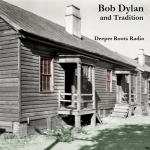
While Bob Dylan’s greatest early influence was likely Woody Guthrie he spent his career exhibiting both love and thievery of the Americana music canon. Love, in the sense that he would pay tribute and admire the story-telling, and theft, in that he would copy old lines for his own purposes or reassemble them into a larger story. His not-so-obvious album release titled “Love and Theft” hints at his own sardonic wit in the matter.
Pablo Picasso has been quoted thusly: “Good artists borrow, great artists steal.” It’s a concept that goes back much further. The works of T.S. Eliot discuss the concept of how artistic theft leads to the creation of new ideas in art and many of the early playwrights, Shakespeare included, would steal in part or in whole. The argument that Dylan’s intentions are somewhat more nefarious in the era of copyrights and royalties is likely misguided because it assumes that no artist would have previously been paid for their ‘pilfered’ works.
In this episode of Deeper Roots, first broadcast on KWTF Sonoma County March 20, 2015, we’ll spend two hours mining through some of those influences with music from Jerry Garcia and David Grisman, Doc Watson, Frank Crumit, Mississippi John Hurt, and the bard himself in an episode titled “Bob Dylan and Tradition”. In keeping with our theme, parts of today’s show are loosely based, or maybe paraphrased, from a wonderful study of Dylan’s career in the context of American tradition including minstrelsy, gospel, folk, country, pop, and blues…all of those things that Dylan has imparted in sometimes not-so-subtle ways in his music. The book, Bob Dylan in America: the book by Sean Wilentz, contributing editor to the New Republic and Professor of History at Princeton. The book was published by Doubleday in 2010.